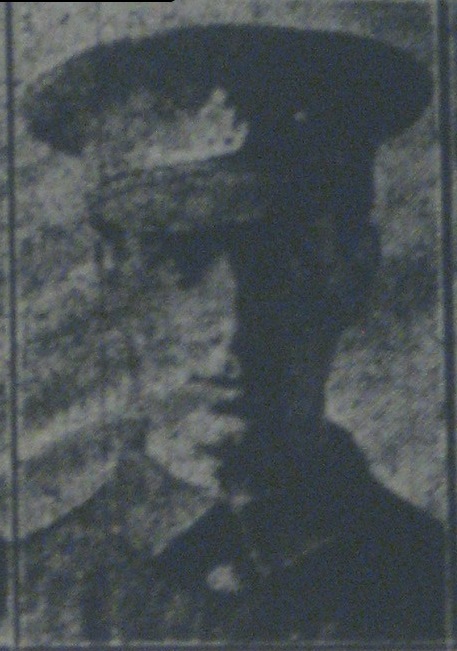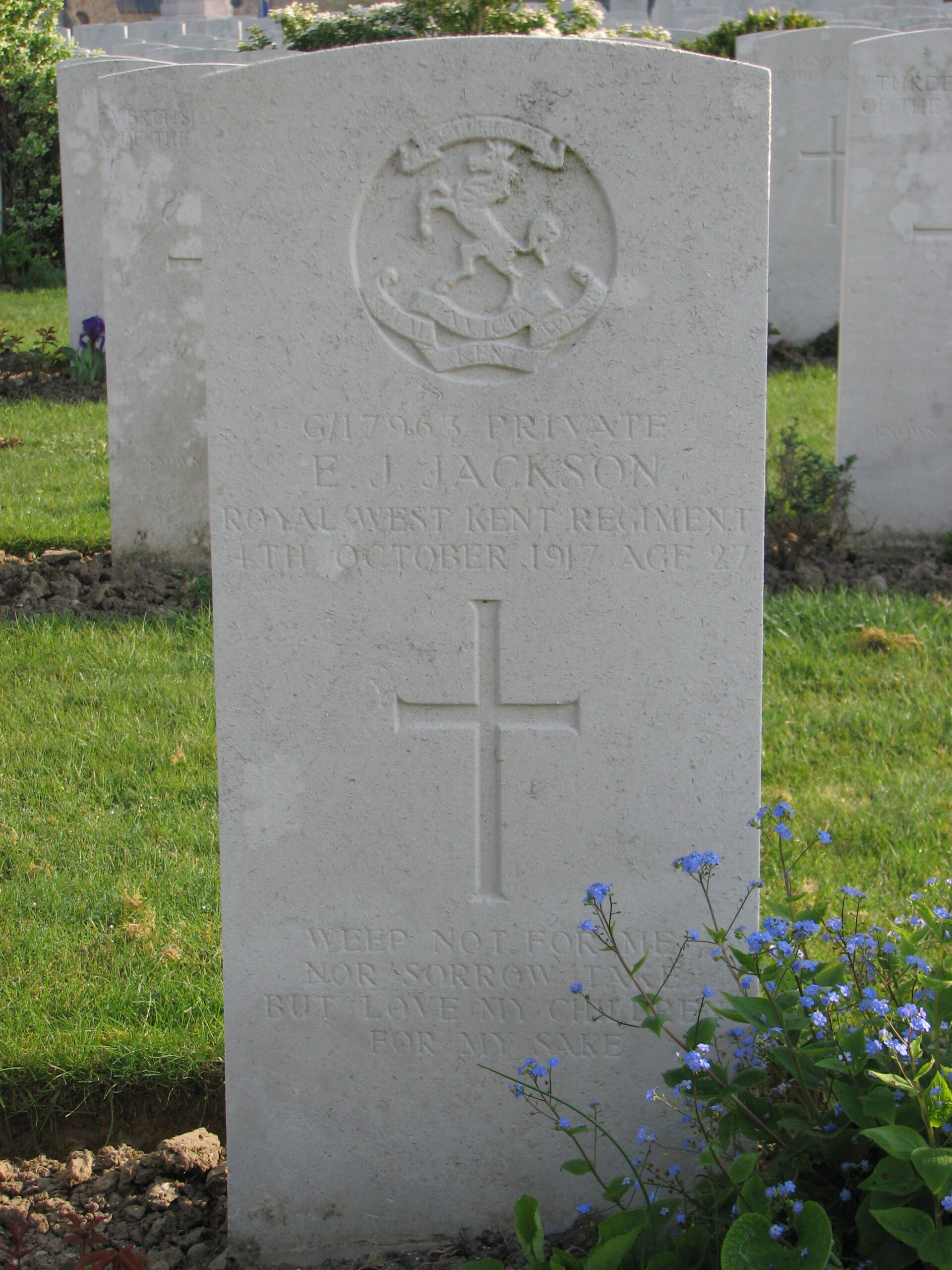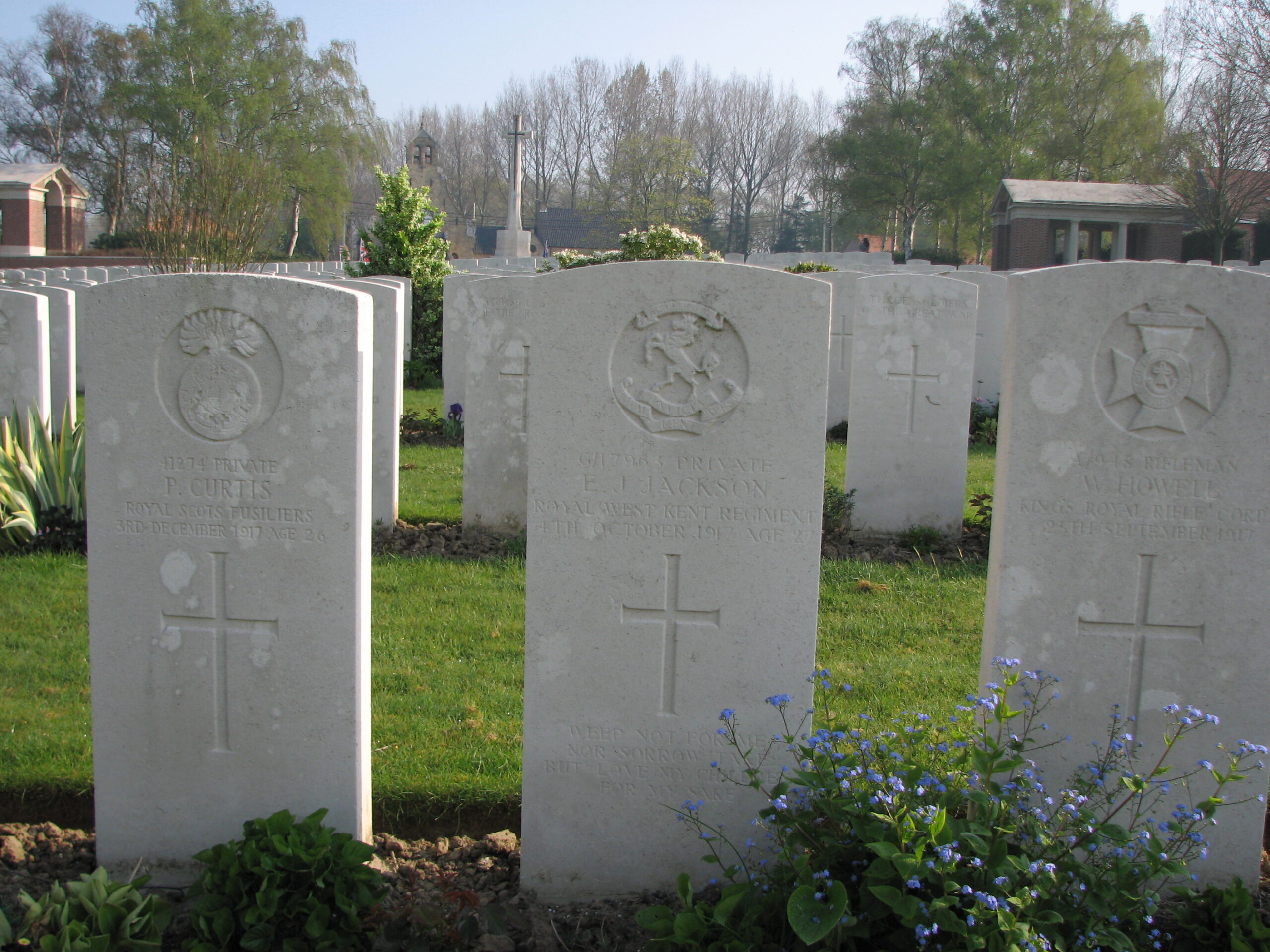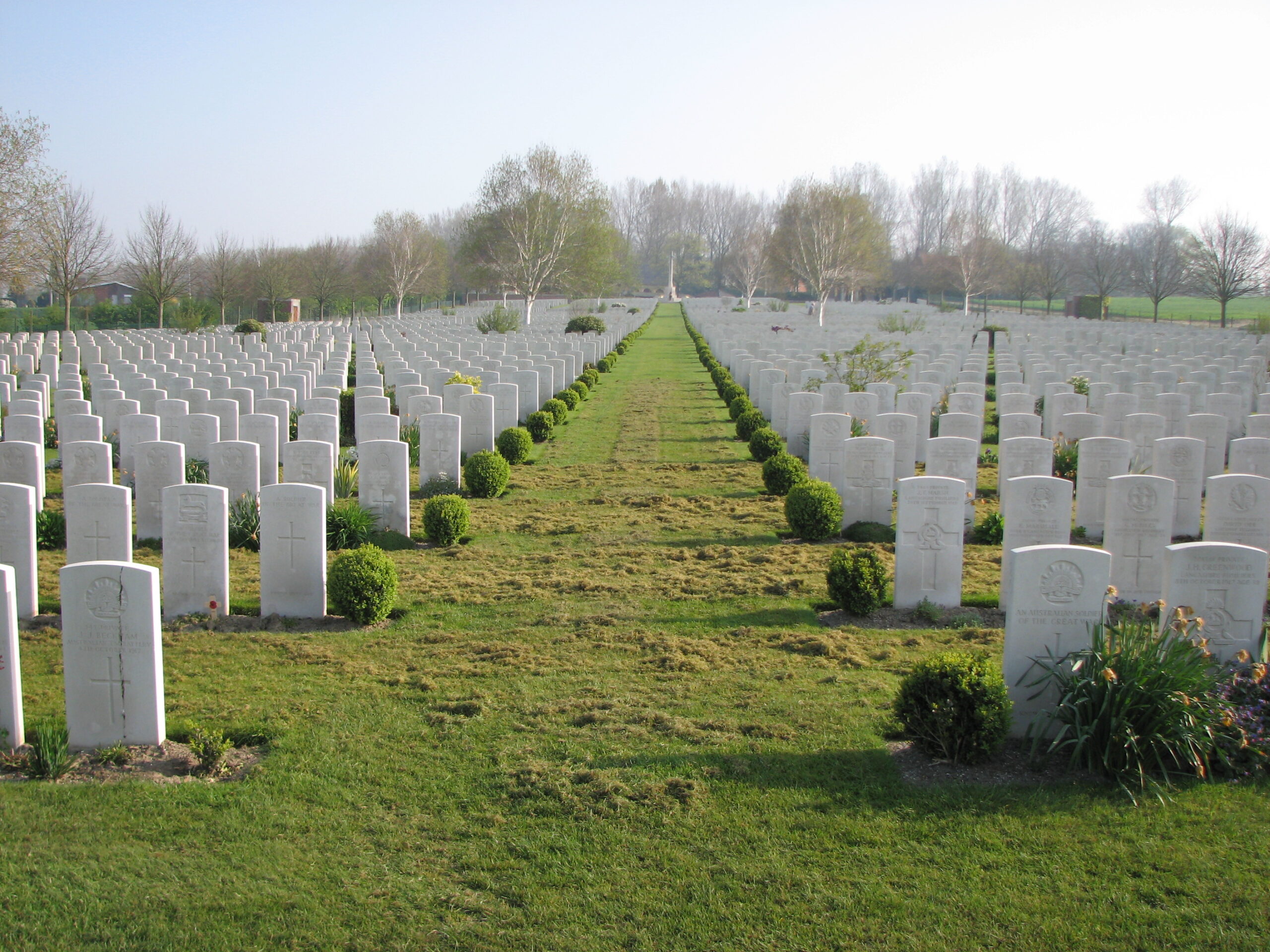Ernest Jackson (1891 - 1917)
A Gardener in civillian life, Ernest was sent to France in October 1916. He was killed during the Third Battle of Ypres, leaving a wife and five young children.
- 40
- Died in the Great War
- 51.977736, 1.017448
Details
| Name: | Ernest James Jackson |
| Service: | British Army |
| Unit: | 1st Battalion, Queen’s Own (Royal West Kent Regiment) |
| Regimental Number: | G/ 17963 |
| Rank: | Private |
| Date of Death: | 4th October 1917 |
| Age: | 26 |
| Buried: | Plot VI, Row J, Grave 14, Hooge Crater Cemetery, near Ieper (Ypres), Belgium |
The British Offensive officially named the Third Battles of Ypres – or more commonly, the Battle of Passchendaele – has become infamous for the limited territorial gains and heavy casualties suffered in squalid, muddy conditions. Four East Bergholt men lost their lives in the Battle, the second of those was 26 year old Ernest Jackson.
Family Background and Early Life
Ernest Jackson was born in East Bergholt on 13th January 1891, most likely at his parents’ house near High Trees Farm. His father William was an agricultural labourer and Horseman, who had been born at Brockford (south of Eye) whilst his mother, Susannah (nee Miles) was from Stonham Parva, near Stowmarket.
William and Susannah had married in 1876, and made their home initially in Stonham Parva, before moving to Holton St. Mary, and then – in the early 1880s – to East Bergholt. They had 10 children altogether, though 3 died in childhood; Ernest was the second youngest.
Ernest started at the village school at Burnt Oak in June 1894, and remained there until just after his 13th birthday. At the time the Board of Education wanted all children to stay on at school until the age of 14, however the majority were still permitted to leave at 12 or 13, in order to start manual labouring jobs.
Work, Marriage and Children
After leaving school, Ernest worked as a Gardener, and was employed by Dr Wood, who lived at the Gothics on Gaston Street.
There is strong evidence to suggest that Ernest was a religious man. He worshipped at the Congregational Church on Cemetery Lane, and we know that he took some religious books with him when he went into battle.
On 19th November 1910, Ernest married 21 year old Emily Last at the St. Mary’s Church in East Bergholt. Emily had been born and raised in Burgh, near Woodbridge, and prior to their marriage had been employed as a Domestic Servant.
The couple made their home at 3, Harold Cottages, near the Carriers Arms. Ernest and Susannah had 5 children together, who they named Elsie, Ernest, Kathleen, Gertrude and Emily. Emily was born one month after Ernest was called up into the Army.
The Group Scheme
Ernest joined the British Army under the Group Scheme on 23rd November 1915. 1 More commonly called the Derby Scheme, after Lord Derby, the Director-General of Recruiting. This was effectively a last ditch attempt by the government to increase recruitment by voluntary means, before they had to resort to conscription.
As permitted under the terms of the Group Scheme, Ernest formally enlisted and joined the Army Reserve but elected to return to his civilian occupation until he was required. The surviving Service Papers from Ernest’s Army Medical show that he was 5 foot 5 inches tall, and weighed 132 lbs
Ernest was called up for the Army on 16th June 1916, and was initially posted to a battalion of the Royal Sussex Regiment to undergo his Basic Training, and later the 97th Training Reserve Battalion at Aldershot.
Since 1 July 1916, the British Expeditionary Force (B.E.F.) in France had been conducting the offensive that has come to be called the Battle of the Somme. The heavy casualties it suffered, increased the need for replacements.
France
Ernest was sent to France on 14th October 1916, and was posted to the 1st Battalion of The Queen’s (Royal West Kent Regiment). He joined the Battalion six days later and went on to the strength of C Company.
The Battalion’s service in the front line areas over the next 10 months was spent in the Givenchy sector (near the town of Bethune), and later near Arras. In the spring of 1917, the 1st Royal West Kents took part in the Battle of Arras, perhaps most notably on the first day of the offensive, they assisted the Canadian Corps in the successful capture of Vimy Ridge.
Third Battle of Ypres
At the end of September, Ernest and his Battalion were sent to Belgium, where the fighting in the Third Battles of Ypres had been raging since 31st July.
The 1st Royal West Kents were to be a part of a large scale attack, on a 14,000 yard front using “bite and hold” tactics. This meant that only a small amount of territory was to be captured, but then it was to be fortified in order to hold on to it against the expected German counter-attacks.
The attack was launched on the morning of 4th October 1917. Ernest’s Battalion were one of the southernmost units and attacked just north of the Menin Road between the hamlet of Veldhoek and village of Gheluvelt. They took and held all of their objectives, but during the attack, C Company came under enfilade machine-gun fire from a German pill-box south of the Road.
Advances were made along almost all of the attack front, and the majority of the units involved attained their objectives. Officially known as the Battle of Broodseinde, this is now regarded by many as the most successful British attack of the entire offensive. It was not without cost, with the British, Australian and New Zealand forces involved suffering nearly 20,000 casualties.
The 1st Royal West Kents had gone into action with 670 men. By the end of the day, over 50% of them were casualties, of whom 109 men had been killed. Ernest was amongst those who were killed.
Ernest was initially buried where he fell.
Postscript
Tragically, the Jackson family would suffer even more, when – in February 1919 – Ernest’s widow Emily, died during the Spanish Flu Pandemic. After Emily’s death, the five children were split up and raised by two Guardians: four of them – at least initially – remained in East Bergholt with Ernest’s mother, but Gertrude went to live with one of her Mother’s relations in Lincolnshire. There is also evidence to suggest that the eldest child Elsie may later have gone to live with one of Ernest’s sisters, in Clacton.
In early 1919, as part of what was euphemistically called “battlefield clearance”, Ernest’s body was found, exhumed and then reburied just over two miles away, in Hooge Crater Cemetery – one of the permanent cemeteries being established by the Imperial War Graves Commission. 2 The Imperial War Graves Commission were renamed the Commonwealth War Graves Commission in 1960. He rests there still. 3 Another East Bergholt man was also laid to rest in Hooge Crater Cemetery: Walter Harvey, had lived at Home Farm before emigrating to Australia. He was killed in action on 26th/27th September 1917, less than a mile from where Ernest was killed one week later.
Copyright © Mark Ashmore, 2024
- 40
- Died in the Great War
- 51.977736, 1.017448




